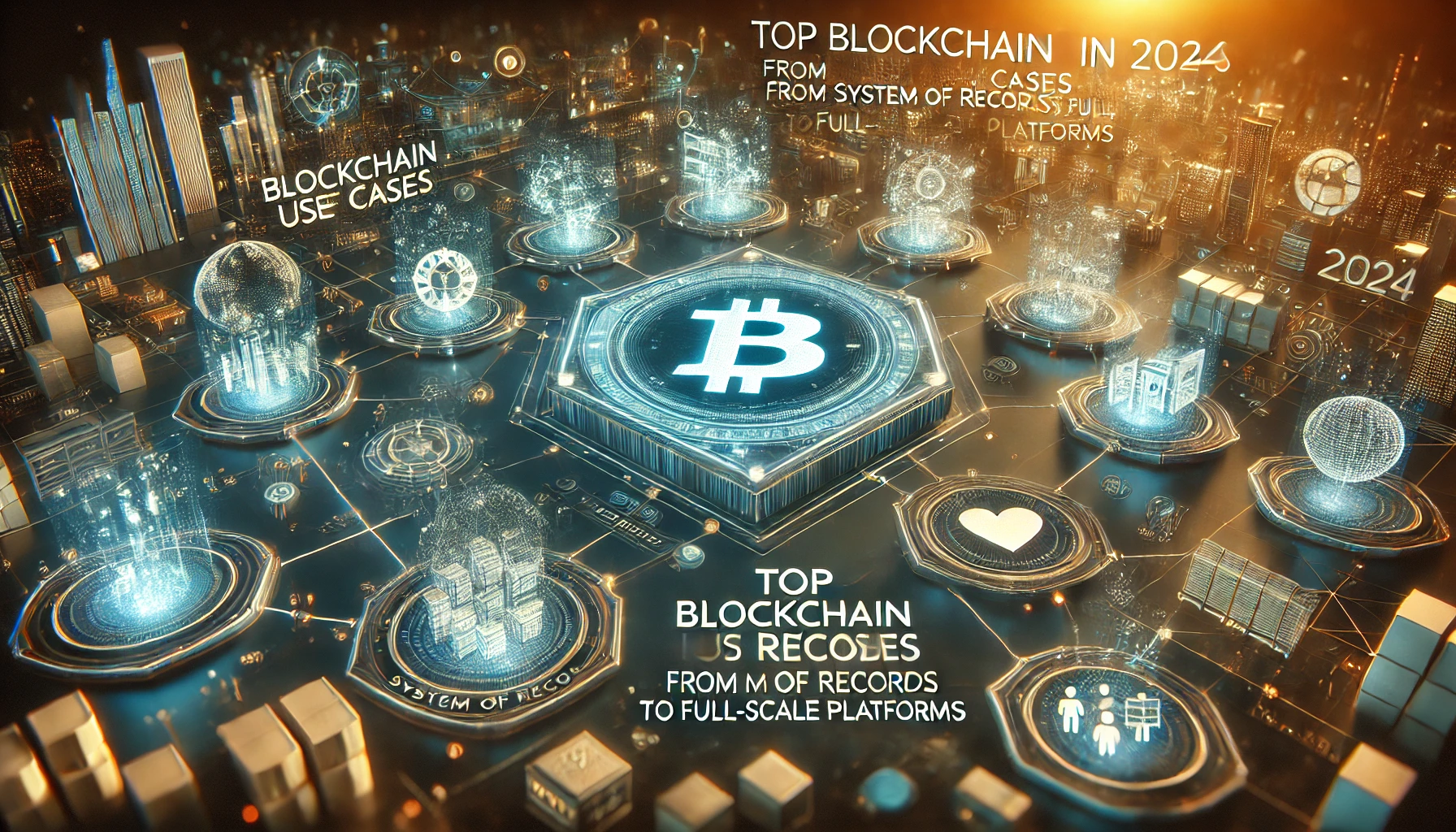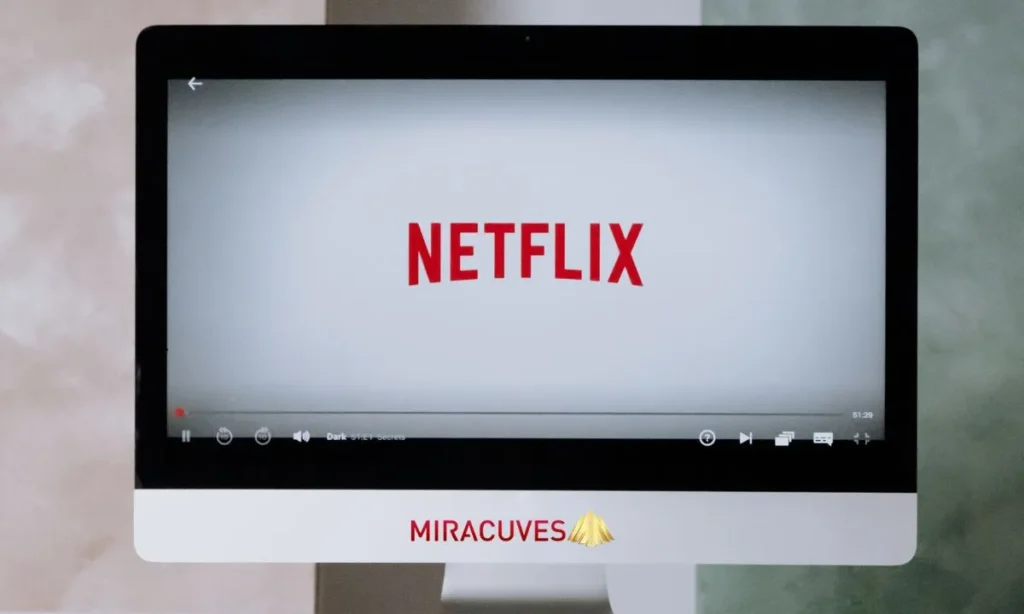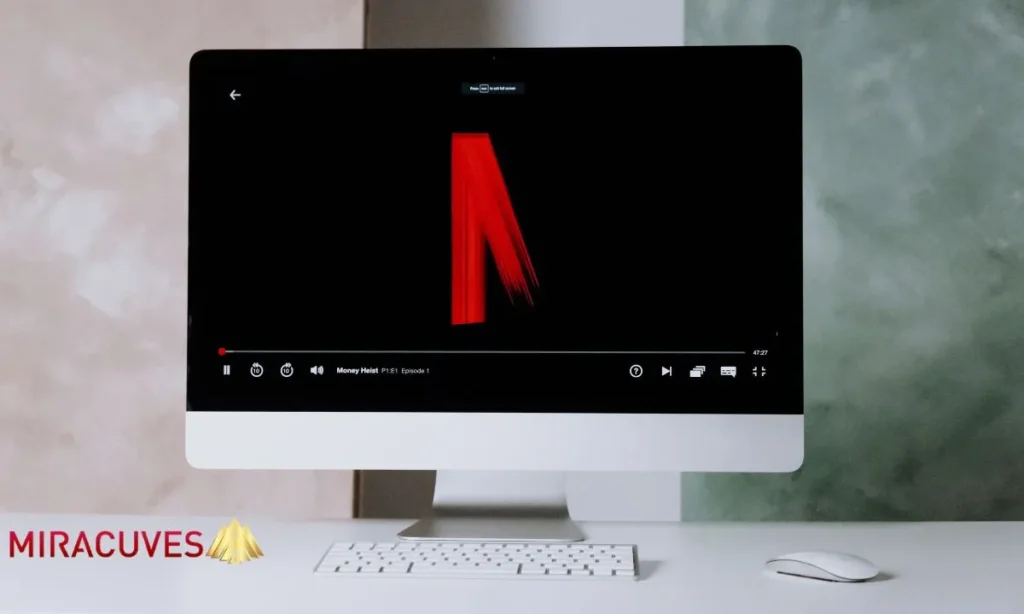Blockchain technology is no longer just a buzzword—it’s now an essential tool for transforming industries. In 2025, we’re witnessing the evolution of blockchain from being a secure record-keeping system to powering full-scale platforms across various sectors. This blog explores the top blockchain use cases for 2025, including blockchain for record-keeping, blockchain as a platform, and much more.
Market Trends for Blockchain in 2025
| Industry | Focus Area | Projected Growth (%) |
|---|---|---|
| Financial Services | Cross-Border Payments, DeFi | 35% |
| Supply Chain | Traceability, Fraud Prevention | 25% |
| Decentralized Finance | Lending, Borrowing, Decentralized Exchanges | 40% |
| Government | Voting, Digital Identity | 20% |
| Healthcare | Secure Data Sharing, Patient Records | 30% |
| Enterprise Applications | Interoperability, Scalability | 45% |
Blockchain technology is experiencing significant growth across multiple industries. Here are some key market trends for 2025:
- Increased Adoption in Financial Services: The financial sector continues to be a leader in blockchain adoption, with major banks and financial institutions implementing blockchain for cross-border payments, asset management, and smart contracts.
- Blockchain for Supply Chain Transparency: The global supply chain crisis during the pandemic highlighted the need for transparency and traceability, leading to a surge in blockchain use for supply chain management. This trend is expected to accelerate in 2025. Blockchain’s impact on supply chain management.
- Rise of Decentralized Finance (DeFi): DeFi continues to be a driving force for blockchain, allowing users to engage in lending, borrowing, and trading without traditional intermediaries. This market is projected to grow exponentially.
- Government and Public Sector Adoption: Governments are exploring blockchain for secure voting systems, welfare distribution, and digital identity management, with pilots and implementations seen in countries like Estonia and Switzerland.
- Blockchain for Data Privacy and Security: With growing concerns over data breaches, companies are turning to blockchain as a secure solution for protecting sensitive information.
- Interoperability and Scalability: Blockchain solutions are focusing on improving scalability and interoperability to support the growing demand for decentralized applications (dApps) and blockchain-based platforms.
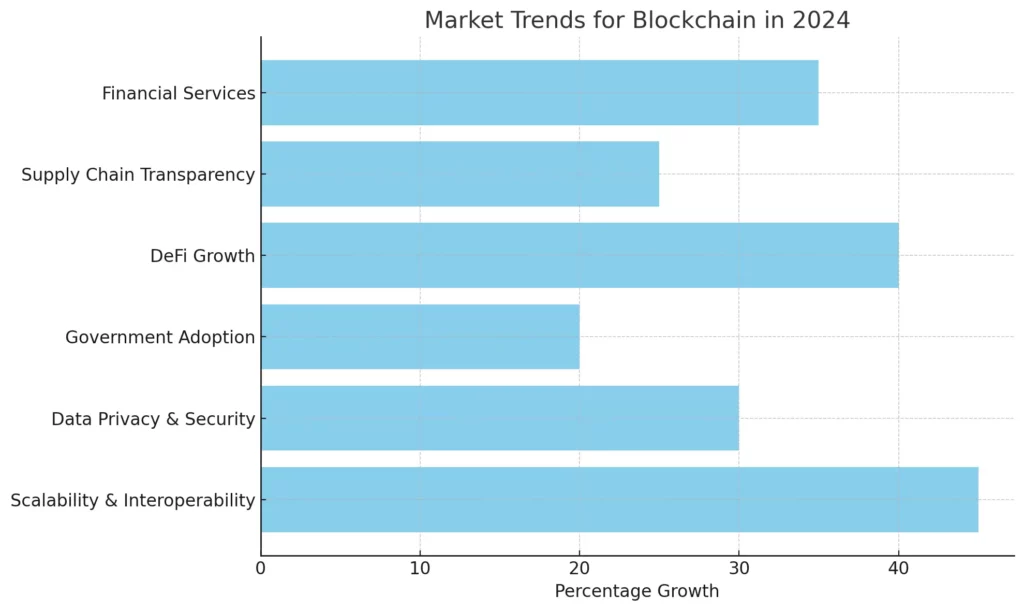
Ready to Explore Blockchain for Your Business?
Want to streamline operations and boost transparency with
blockchain technology? Let’s explore how
it fits your goals.
1. Blockchain for Record-Keeping: A Secure System of Records
One of the earliest and most enduring use cases for blockchain has been its ability to act as a system of records. Blockchain technology ensures that data remains immutable, decentralized, and transparent, which is particularly valuable in sectors requiring tamper-proof records.
Industries Benefiting from Blockchain for Record-Keeping:
- Financial Services: Blockchain’s ability to offer enterprise blockchain solutions for maintaining transaction records has significantly streamlined operations in financial institutions.
- Government: Blockchain is increasingly being adopted for secure record-keeping in governmental operations, including public vs private blockchain frameworks that ensure both transparency and privacy where needed.
- Healthcare: Storing patient records on a blockchain allows for more secure and accessible healthcare data management, preventing data tampering and enabling seamless data sharing between medical professionals. Blockchain in healthcare for data security.
2. Blockchain as a Full-Scale Platform
Beyond record-keeping, blockchain as a platform is emerging as the backbone for decentralized applications (dApps) and decentralized finance (DeFi). Enterprises are leveraging blockchain technology applications to build more scalable and secure platforms, significantly transforming how they manage operations.
Key Platforms Utilizing Blockchain in 2025:
- Hyperledger: A leading blockchain infrastructure supporting enterprise-grade applications that require blockchain scalability and high transaction throughput.
- Ethereum: Known for its smart contracts, Ethereum continues to dominate the dApp space, offering an open platform for decentralized applications across industries.

3. Blockchain in Financial Services
Blockchain has revolutionized financial services, offering transparency, security, and cost-efficiency. In 2025, blockchain is pivotal in reducing transaction costs, enhancing cross-border payments, and increasing security in financial transactions.
Applications of Blockchain in Financial Services:
- Decentralized Finance (DeFi): Financial products and services are now built directly on blockchain, eliminating the need for intermediaries.
- Smart Contracts: Automating agreements through blockchain smart contracts has led to faster, more reliable financial services.
- Blockchain for Data Security: Ensuring that financial records are encrypted and stored immutably provides unmatched security in a world where data breaches are increasingly common.
4. Blockchain for Supply Chain Management
In supply chains, transparency and traceability are paramount. Blockchain’s decentralized and tamper-proof nature enables companies to verify every step in the supply chain—from raw materials to end consumers.
Notable Blockchain Use Cases in Supply Chain:
- Food and Beverage: Using blockchain for tracing food origins ensures authenticity and boosts consumer trust.
- Pharmaceuticals: Blockchain can verify the legitimacy of drugs, helping eliminate counterfeit medications and ensuring patient safety.
5. Blockchain in Healthcare
Blockchain in healthcare is transforming how patient data is managed and shared. The adoption of distributed ledger technology (DLT) in healthcare ensures the secure storage and accessibility of sensitive medical data while maintaining patient privacy.
Benefits of Blockchain in Healthcare:
- Data Interoperability: With blockchain integration in business and healthcare, providers can access patient records globally without compromising privacy.
- Enhanced Security: Blockchain secures data against unauthorized access, reducing the risk of breaches in an era of increasing cybersecurity threats.
6. Blockchain for Digital Identity Management
As digital identity becomes more crucial, blockchain for digital identity is revolutionizing how we authenticate individuals and organizations online. Blockchain provides a decentralized solution for managing and verifying identities, offering enhanced security compared to traditional methods.
Use Cases for Digital Identity:
- KYC (Know Your Customer): Financial services use blockchain to streamline the KYC process, reducing fraud while improving verification speed.
- Government Identification: Governments are exploring blockchain-based digital IDs for secure and transparent citizen identification processes.
7. Blockchain in Government and Public Services
Governments around the world are recognizing blockchain’s potential to revolutionize public services. From voting systems to welfare distribution, blockchain ensures transparency, reduces corruption, and speeds up bureaucratic processes.
Examples of Blockchain in Government:
- Blockchain in Voting: Securing election data using blockchain eliminates voter fraud and boosts public trust.
- Blockchain for Welfare: Streamlining the distribution of welfare benefits using blockchain ensures timely, accurate payments.
8. Blockchain for Data Security
The immutable and decentralized features of blockchain make it a game-changer for data security. With cyber threats increasing, blockchain’s encryption and decentralized storage make it nearly impossible for hackers to alter sensitive information.
Why Blockchain Security is Critical in 2025:
- Increased Data Privacy Regulations: Regulations such as GDPR demand strict data security standards. Blockchain’s capabilities in blockchain security provide a solution for compliance.
- Public vs Private Blockchain: While public blockchains offer transparency, private blockchains provide enhanced control and security, making them ideal for corporate and governmental use.
9. Public vs Private Blockchain
Deciding between public vs private blockchain often depends on the use case. Public blockchains are ideal for transparency and decentralization, while private blockchains offer greater control for enterprises.
When to Use Public or Private Blockchain:
- Public Blockchain: Best for decentralized applications where openness is prioritized.
- Private Blockchain: More suitable for enterprises needing full control over data while maintaining the benefits of blockchain technology.
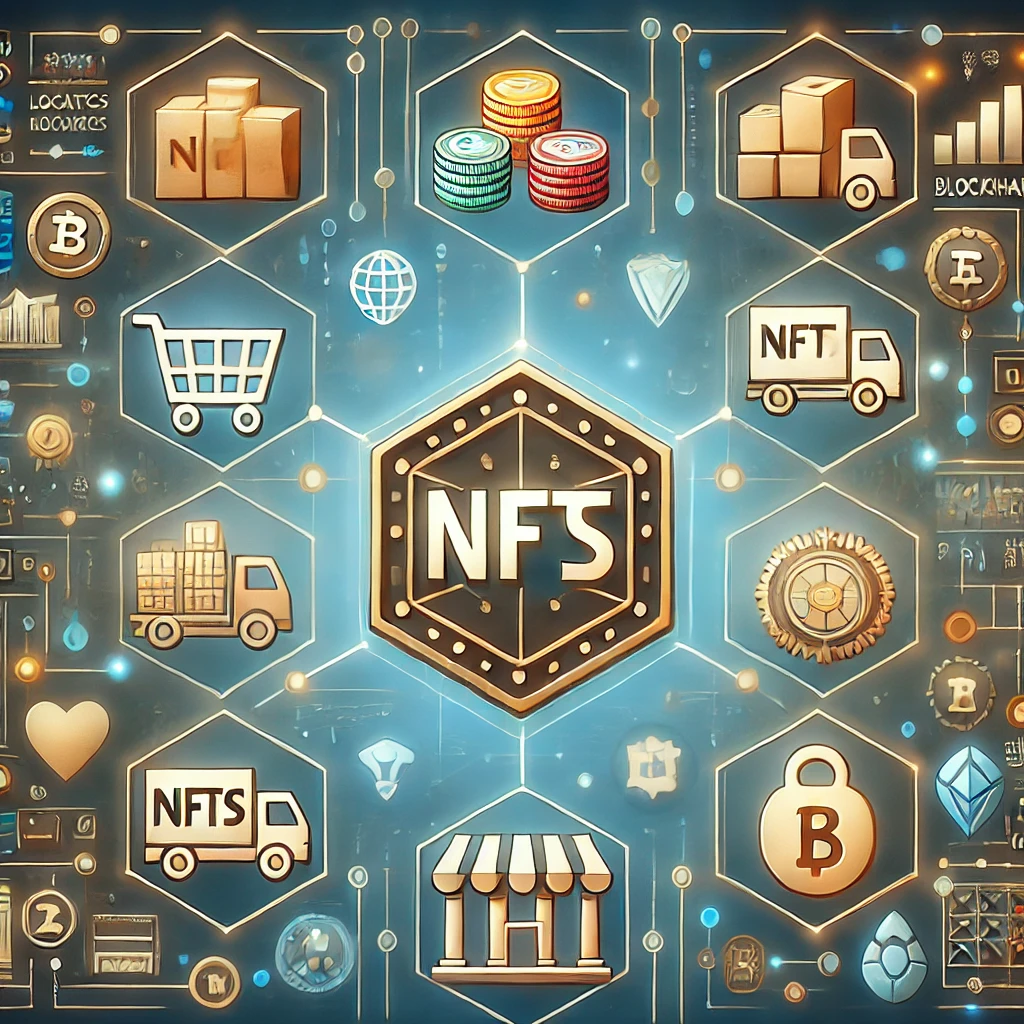
10. The Role of Smart Contracts and Blockchain Development Tools
Smart contracts remain one of blockchain’s most potent tools, automating processes without the need for intermediaries. Development tools have evolved to make smart contract creation easier and more secure.
Smart Contract Use Cases:
- Legal Agreements: Automating legal contracts ensures no room for human error or manipulation.
- Financial Services: Reducing the need for intermediaries in loans and insurance claims processes.
Top Blockchain Platforms in 2025
| Blockchain Platform | Primary Use Case | Revenue Model | Example |
|---|---|---|---|
| Ethereum | dApps, Smart Contracts | Transaction Fees (Gas) | Uniswap, Compound |
| Hyperledger Fabric | Enterprise Blockchain Solutions | SaaS Subscription Fees | IBM Food Trust |
| Binance Smart Chain | DeFi, Tokenization | Transaction Fees | PancakeSwap |
| Solana | High-Speed dApps, Scalability | Minimal Transaction Fees | Serum |
| Ripple (XRP Ledger) | Cross-Border Payments | Licensing Fees, Transaction Fees | Santander, American Express |
| Cardano | Smart Contracts, Scalability | Transaction Fees, Custom Solutions | Education and Agriculture Solutions |
| Tezos | Tokenization, Self-Amending Blockchain | Transaction Fees, Staking Rewards | Ubisoft NFT Projects |
Several blockchain platforms have emerged as leaders in the industry, each offering unique solutions tailored to specific use cases. Below are some of the top platforms that are driving blockchain adoption across industries:
1. Ethereum
- Primary Use Case: Decentralized applications (dApps) and smart contracts.
- Overview: Ethereum remains the most popular blockchain platform for building dApps and deploying smart contracts. Its robust developer community and open-source nature make it the go-to platform for decentralized finance (DeFi), gaming, and enterprise applications.
- Revenue Model: Ethereum generates revenue through transaction fees (known as “gas”) for executing smart contracts and deploying dApps.
- Example: DeFi applications like Uniswap and Compound operate on Ethereum, enabling decentralized trading and lending.
2. Hyperledger Fabric
- Primary Use Case: Enterprise blockchain solutions.
- Overview: Hyperledger Fabric is designed for enterprise-grade applications, providing a modular architecture that allows businesses to build private, permissioned blockchains. It’s widely adopted in industries like supply chain management, healthcare, and finance.
- Revenue Model: Hyperledger is often integrated as part of enterprise software-as-a-service (SaaS) solutions, generating revenue through subscription fees for custom blockchain solutions.
- Example: IBM Food Trust uses Hyperledger to provide traceability and transparency in global food supply chains.
3. Binance Smart Chain (BSC)
- Primary Use Case: Decentralized finance and tokenization.
- Overview: Binance Smart Chain (BSC) is known for its low-cost and high-speed transactions, making it ideal for DeFi applications and token-based projects. BSC has quickly gained popularity due to its compatibility with Ethereum’s ecosystem.
- Revenue Model: BSC generates revenue through transaction fees on the network.
- Example: PancakeSwap, a popular DeFi exchange, operates on BSC, allowing users to trade tokens and earn rewards through staking.
4. Solana
- Primary Use Case: High-speed, scalable decentralized applications.
- Overview: Solana is known for its scalability and fast transaction speeds, making it a popular choice for applications requiring high throughput. It supports a wide variety of use cases, including finance, gaming, and non-fungible tokens (NFTs).
- Revenue Model: Solana charges minimal transaction fees, with revenue generated from transaction processing and dApp hosting.
- Example: Serum, a decentralized exchange, operates on Solana, offering high-speed trading with low transaction costs.
5. Ripple (XRP Ledger)
- Primary Use Case: Cross-border payments and financial services.
- Overview: Ripple’s XRP Ledger is tailored for fast, secure cross-border payments, making it popular in the financial services sector. Its ability to settle transactions in real-time has attracted major partnerships with banks and financial institutions.
- Revenue Model: Ripple earns revenue through licensing fees, transaction fees, and by providing liquidity services to financial institutions.
- Example: Ripple is partnered with institutions like Santander and American Express for cross-border payment solutions.
6. Cardano
- Primary Use Case: Scalable dApps and smart contracts.
- Overview: Cardano is a proof-of-stake blockchain that focuses on scalability, security, and sustainability. It is known for its peer-reviewed academic research and its ability to host smart contracts and decentralized applications.
- Revenue Model: Cardano’s revenue comes from transaction fees and partnerships for building custom blockchain solutions.
- Example: Cardano is being used in sectors like education and agriculture in developing countries to create transparent and efficient solutions.
7. Tezos
- Primary Use Case: Self-amending blockchain and tokenization.
- Overview: Tezos is a flexible blockchain platform designed to evolve over time through its self-amendment feature, which allows upgrades without hard forks. It is popular for tokenization, especially in NFTs and decentralized governance.
- Revenue Model: Tezos generates revenue through transaction fees and staking rewards.
- Example: Tezos is used by companies like Ubisoft for its gaming-focused NFT projects.
These top blockchain platforms showcase the diverse applications of blockchain technology across various industries. Each of these platforms provides unique features and capabilities, enabling businesses to leverage blockchain for enhanced transparency, security, and scalability.
Revenue Model for Blockchain Use Cases
| Use Case | Primary Industry | Key Benefits |
|---|---|---|
| Record-Keeping | Finance, Government, Healthcare | Transparency, Immutability, Data Integrity |
| Blockchain as a Platform | DeFi, dApps, Enterprise | Decentralization, Scalability, Security |
| Financial Services | Finance, DeFi | Reduced Transaction Costs, Smart Contracts, Cross-Border Payments |
| Supply Chain Management | Retail, Manufacturing, Pharmaceuticals | Traceability, Transparency, Fraud Prevention |
| Healthcare | Healthcare | Secure Data Sharing, Patient Privacy, Data Integrity |
| Digital Identity | Finance, Government | Secure Authentication, KYC Streamlining, Fraud Prevention |
| Government | Public Services | Transparency, Secure Voting, Welfare Distribution |
| Data Security | Finance, Healthcare, Enterprises | Immutability, Tamper-Proof Records, Data Privacy |
Blockchain’s versatility offers several revenue-generating opportunities across different industries. Here’s a breakdown of the most common revenue models for blockchain-based applications:
- Transaction Fees: Platforms using blockchain for financial services (e.g., cross-border payments, decentralized exchanges) charge transaction fees for each transaction processed on the network. This is a major source of revenue, especially for DeFi platforms and exchanges.
- Subscription-Based Model: Many blockchain solutions, especially in enterprise blockchain applications, are offered as SaaS (Software as a Service) platforms. Companies subscribe to these services for access to blockchain infrastructure, development tools, and integration capabilities.
- Smart Contract Fees: Blockchain platforms that enable smart contract development charge fees for contract deployment and execution. This is common on platforms like Ethereum.
- Token Sales and Initial Coin Offerings (ICO): Some blockchain platforms generate revenue through the sale of native tokens, either via Initial Coin Offerings (ICO) or through exchanges. These tokens are often used to access services or governance on the platform.
- Consulting and Development Services: Companies like Miracuves Solutions offer consulting and custom blockchain development services, charging clients for expertise in building and integrating blockchain systems within their businesses.
- Data Monetization: Blockchain platforms, particularly those in healthcare and supply chain, can offer insights and secure data streams that are sold to third parties, generating revenue from data access.
- Staking and Yield Farming: In the DeFi ecosystem, users earn revenue by staking tokens or participating in yield farming. Platforms generate revenue through fees associated with these financial services.
| Revenue Model | Description | Examples |
|---|---|---|
| Transaction Fees | Fees charged for executing transactions on the blockchain | Ethereum, Binance Smart Chain |
| Subscription-Based Model | SaaS model where enterprises pay for access to blockchain services | Hyperledger Fabric |
| Smart Contract Fees | Fees for deploying and executing smart contracts | Ethereum, Solana |
| Token Sales/ICO | Sale of native tokens to raise funds or for platform access | Various platforms (e.g., Ethereum, Solana) |
| Consulting & Development | Charging clients for custom blockchain solutions and consulting services | Miracuves Solutions, IBM Blockchain Services |
| Data Monetization | Selling access to blockchain data or insights | Healthcare, Supply Chain Platforms |
| Staking & Yield Farming | Revenue from staking tokens or yield farming in DeFi | Binance Smart Chain, Ethereum DeFi Protocols |
These models ensure that blockchain continues to be both a transformative and profitable technology across industries in 2025.
Conclusion: Blockchain’s Future in 2025
In 2025, blockchain technology continues to evolve, offering powerful solutions across industries. From blockchain for record-keeping and blockchain in financial services to blockchain as a platform for decentralized applications, the possibilities are limitless. Whether for securing data, improving supply chain transparency, or enabling digital identity, blockchain’s impact is transformative.
If you’re considering integrating blockchain into your business, now is the time. Contact Miracuves Solutions to discover how we can help you develop enterprise blockchain solutions tailored to your needs.
Looking to boost transparency, security, and efficiency?
Explore custom blockchain solutions built for your needs.
FAQ
What are the top blockchain use cases in 2025?
The top blockchain use cases include record-keeping, financial services (like decentralized finance or DeFi), supply chain transparency, healthcare data security, and digital identity management. Blockchain’s secure and decentralized nature makes it ideal for industries requiring transparency and immutability of data.
How is blockchain used in financial services?
Blockchain is revolutionizing financial services by enabling faster and cheaper cross-border payments, eliminating intermediaries through smart contracts, and fostering the growth of decentralized finance (DeFi). Financial institutions also use blockchain for secure data privacy and more transparent transaction processing.
How can blockchain improve supply chain management?
Blockchain enhances supply chain management by providing transparency, traceability, and fraud prevention. Companies can verify the authenticity of products at each stage, from raw materials to the end consumer, making blockchain especially useful in industries like pharmaceuticals, food, and retail.
What is the difference between public and private blockchain?
A public blockchain is open to anyone and is decentralized, allowing participants to view and validate transactions. In contrast, a private blockchain is permissioned, where only selected participants have access, making it more suitable for enterprises that require greater control and privacy over their data.
What is blockchain’s role in healthcare in 2025?
Blockchain is transforming healthcare by providing secure and decentralized solutions for storing and sharing patient data. With blockchain, healthcare providers can access verified patient records without compromising privacy, ensuring data integrity and improving overall healthcare delivery.
How can businesses generate revenue using blockchain?
Businesses can monetize blockchain through several models, including transaction fees (for platforms like Ethereum), subscription-based models for enterprise blockchain solutions, smart contract deployment fees, and consulting services. Additionally, companies can earn revenue through token sales or data monetization in industries like healthcare and supply chain.



